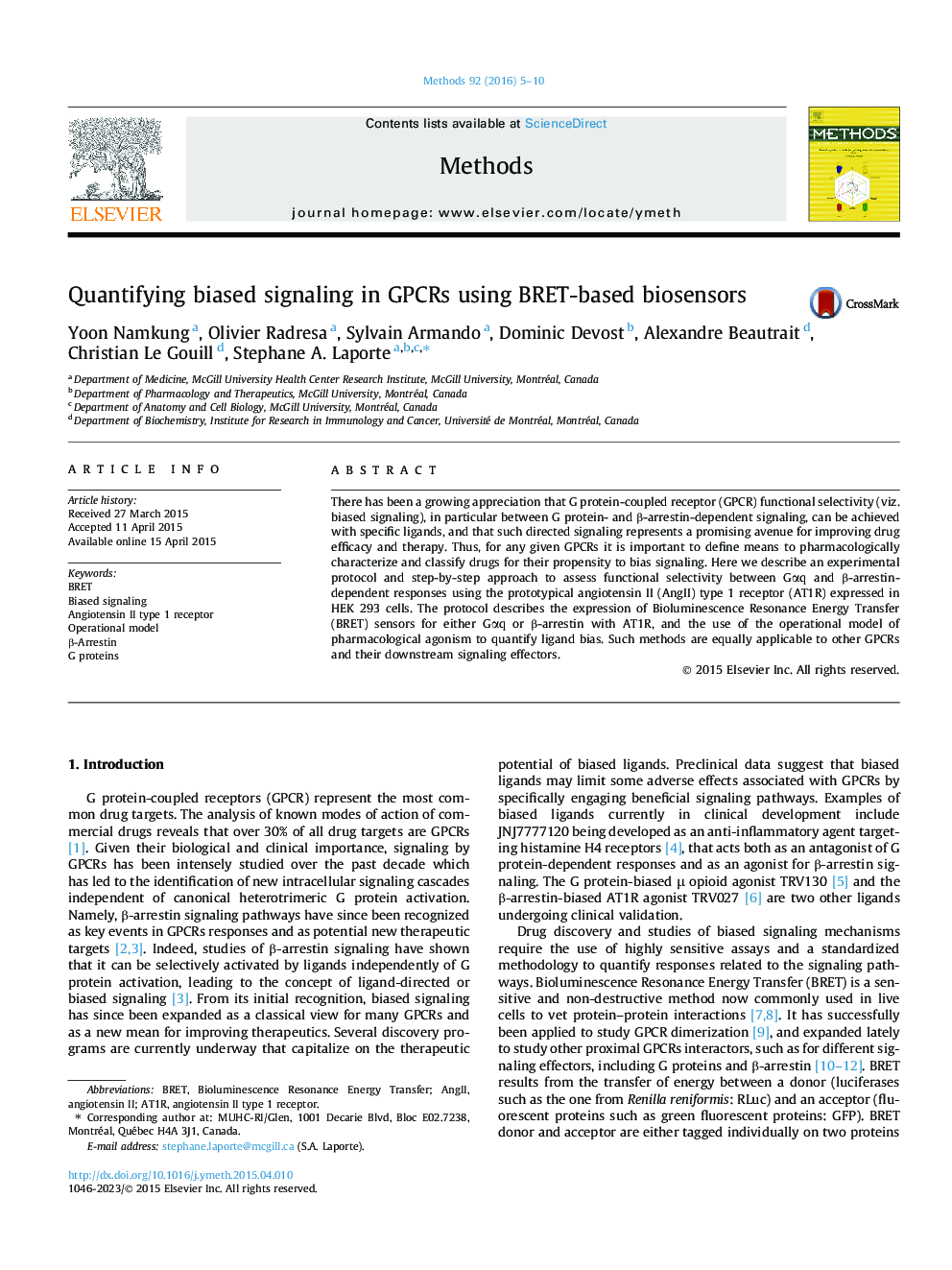| کد مقاله | کد نشریه | سال انتشار | مقاله انگلیسی | نسخه تمام متن |
|---|---|---|---|---|
| 1993208 | 1541234 | 2016 | 6 صفحه PDF | دانلود رایگان |

• We report a simple step-by-step procedure to quantify bias signaling using homogeneous cell-based assays and BRET sensors.
• AngII ligands are used to demonstrate bias signaling on AT1R.
• Biased responses are vetted between Gq- or the β-arrestin signaling pathways.
• We used the “Operational Model of agonism” for fitting and calculating mathematical parameters of bias.
There has been a growing appreciation that G protein-coupled receptor (GPCR) functional selectivity (viz. biased signaling), in particular between G protein- and β-arrestin-dependent signaling, can be achieved with specific ligands, and that such directed signaling represents a promising avenue for improving drug efficacy and therapy. Thus, for any given GPCRs it is important to define means to pharmacologically characterize and classify drugs for their propensity to bias signaling. Here we describe an experimental protocol and step-by-step approach to assess functional selectivity between Gαq and β-arrestin-dependent responses using the prototypical angiotensin II (AngII) type 1 receptor (AT1R) expressed in HEK 293 cells. The protocol describes the expression of Bioluminescence Resonance Energy Transfer (BRET) sensors for either Gαq or β-arrestin with AT1R, and the use of the operational model of pharmacological agonism to quantify ligand bias. Such methods are equally applicable to other GPCRs and their downstream signaling effectors.
Journal: Methods - Volume 92, 1 January 2016, Pages 5–10